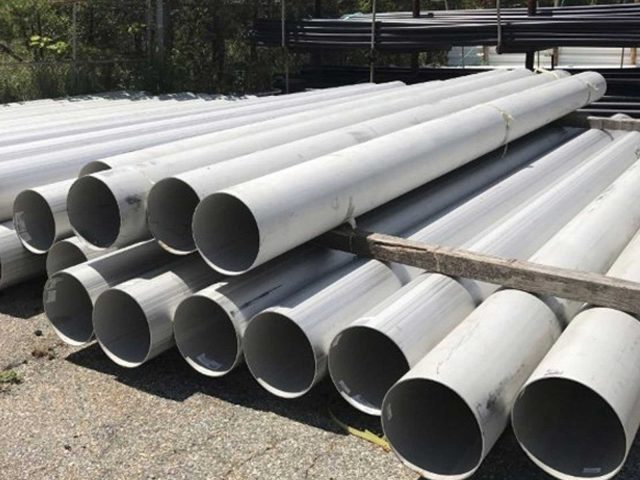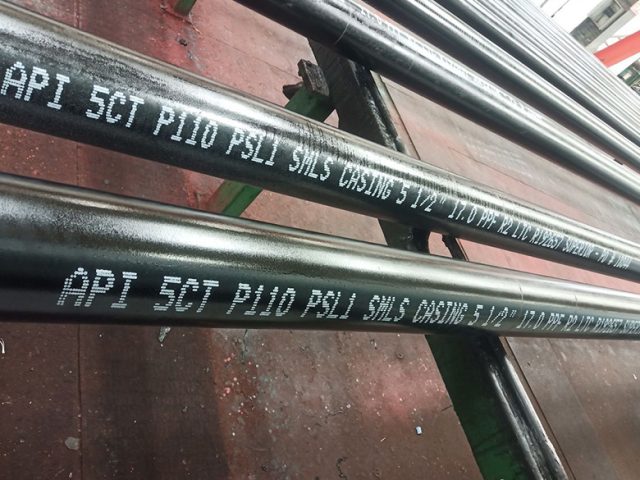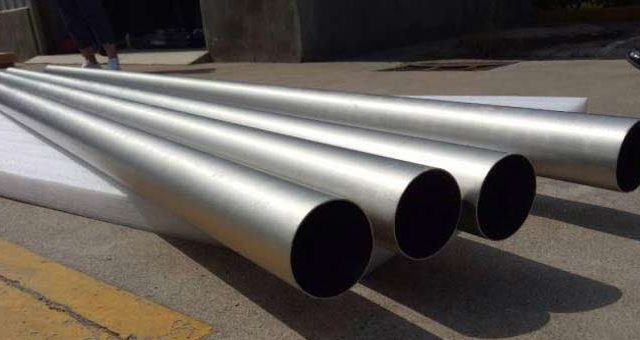Galvanized Steel Pipe | Hot-dip and Cold-dip Galvanized Steel
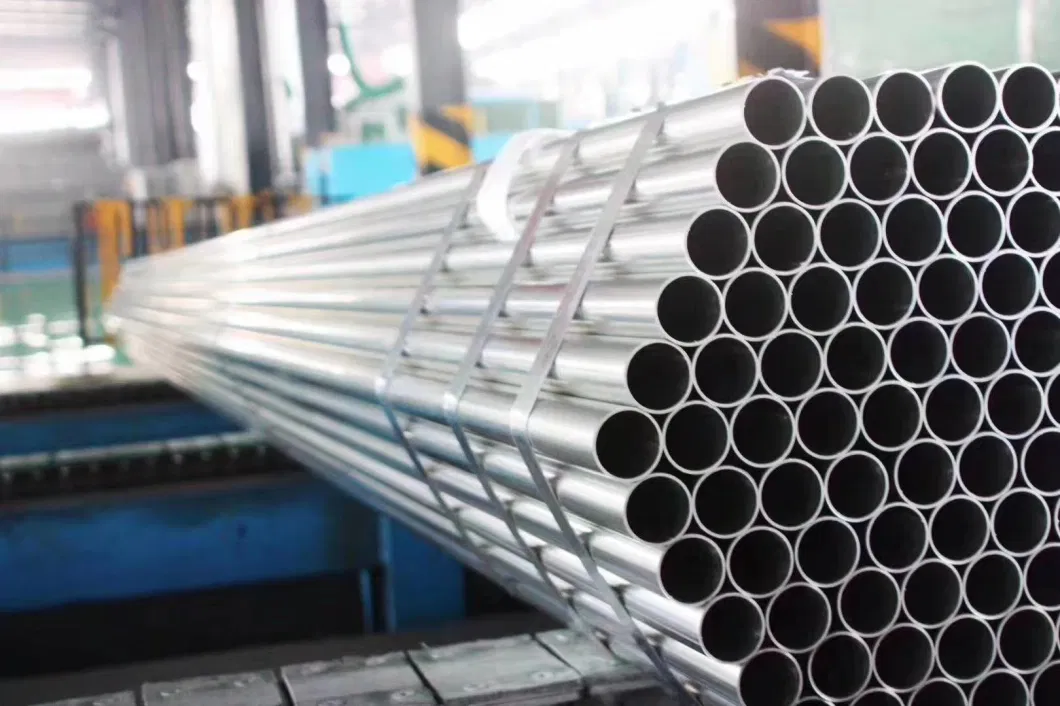
Galvanized Steel Pipe
Galvanized steel pipes are steel pipes that have undergone the process of galvanization. Galvanizing involves coating the steel pipe with a layer of zinc to protect it from corrosion and rust. This is achieved by immersing the steel pipe in a molten zinc bath, a process known as hot-dip galvanization.
| Product name | Galvanized steel pipe |
| Material | 10#, 20#, 45#, 16Mn, A53(A,B), Q235, Q345, Q195, Q215, St37, St42, St37-2, St35.4, St52.4, ST35 |
| Wall Thickness | 1mm-12mm |
| Length | Length:Single random length/Double random length 5m-14m,5.8m,6m,10m-12m,12m or as customer’s actual reques |
| Technique | Hot dip galvanized steel pipe |
| Packing | Bundle, or with all kinds of colors PVC or as your requirements |
| Pipe Ends | Plain end/Beveled,protected by plastic caps on both ends, cut quare,grooved,threaded and coupling,etc. |
| Surface Treatment | 1. Galvanized
2. PVC,Black and color painting 3. Transparent oil,anti-rust oil 4. According to clients requirement |
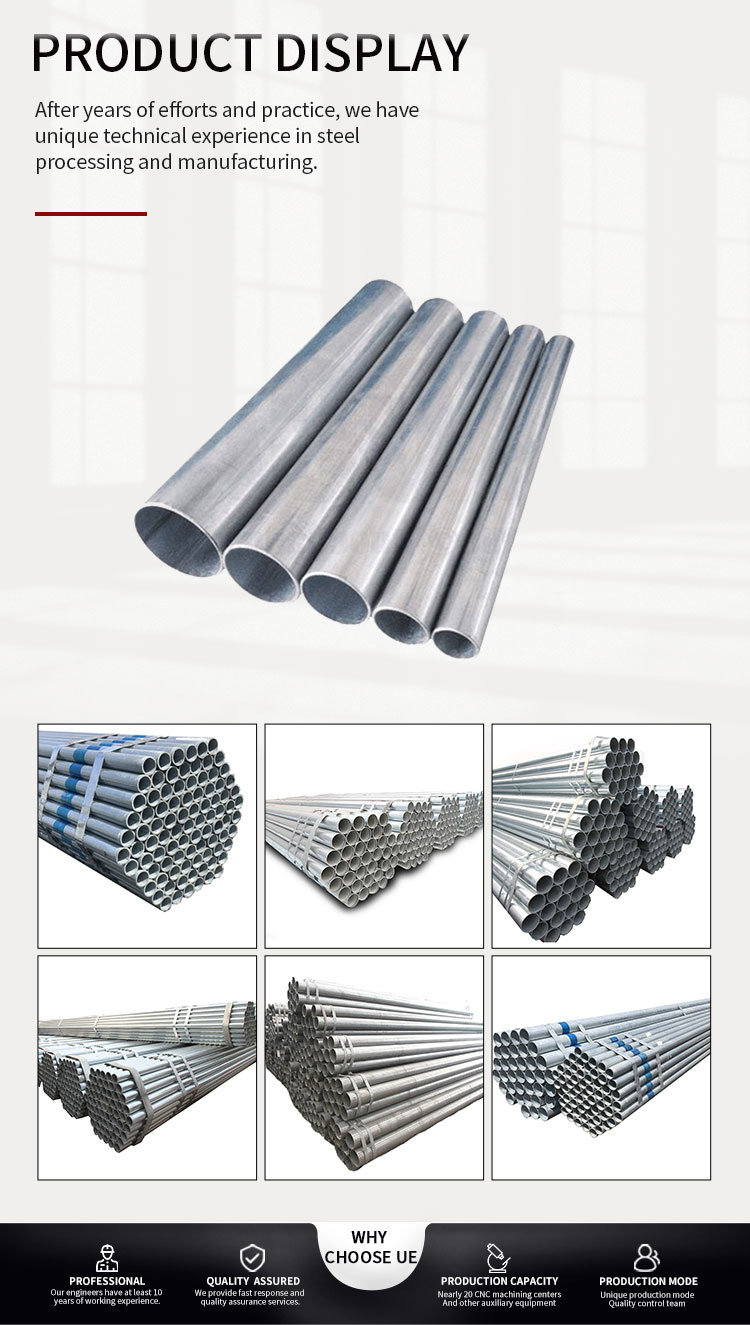
| ROUND STEEL PIPE MATERIAL | |||||
| Standards | ASTM A53 / API 5L | ISO65 | JIS3444 | BS1387/EN10255 | GB/T3091 |
| Steel Grade | Gr. A | STK290 | S195 | Q195 | |
| Gr. B | √ | STK440 | S235 | Q235 | |
| Gr.C | STK500 | S355 | Q355 | ||
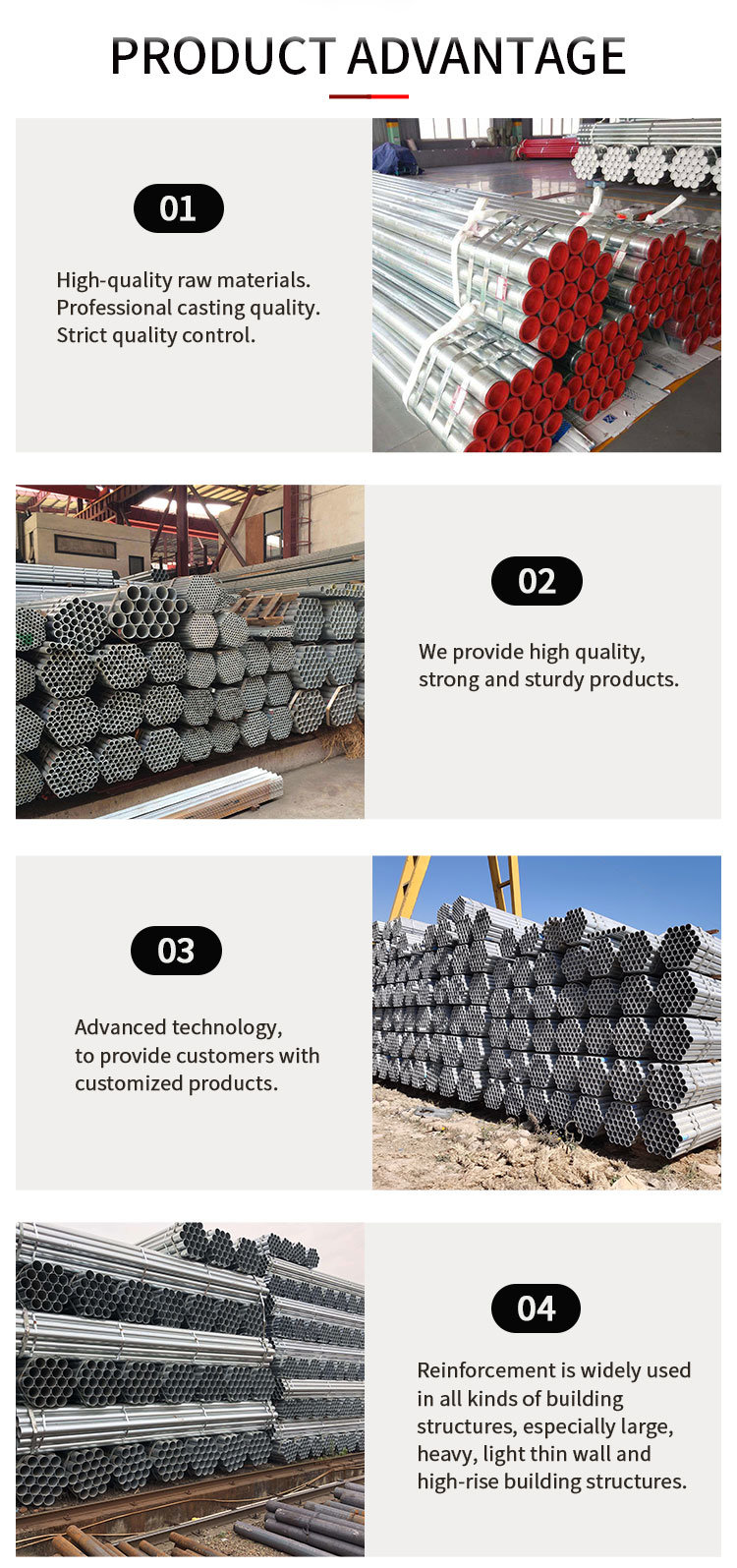
Structure of Galvanized Steel Pipe
A galvanized steel pipe typically consists of:
- Steel Pipe: The base material that serves as the primary structure.
- Zinc Coating: A layer of zinc that is applied to all surfaces of the steel pipe to provide a barrier against corrosion.
Process of Galvanizing
The process of galvanizing a steel pipe involves several steps:
- Surface Preparation: The steel pipe is thoroughly cleaned to remove any oil, grease, scale, or other contaminants. This usually involves a series of steps including degreasing, pickling (acid cleaning), and fluxing.
- Galvanizing: The cleaned steel pipe is then immersed in a bath of molten zinc, typically at a temperature of around 460°C (860°F). The zinc reacts with the steel to form a series of zinc-iron alloy layers.
- Cooling and Finishing: After galvanizing, the pipe is cooled, either passively in air or by quenching in water. It may then be passivated or coated with a light oil to reduce the risk of wet storage stain, a form of white rust.
Advantages of Galvanized Steel Pipe
- Corrosion Protection: The primary advantage of galvanized steel pipe is its resistance to corrosion and rust. The zinc coating acts as a sacrificial anode, meaning that it will corrode in preference to the underlying steel, thus protecting it.
- Longevity: Galvanized steel pipes can have a very long lifespan, often exceeding 50 years in rural environments and 25 years in more severe urban and coastal environments.
- Low Maintenance: Once a steel pipe has been galvanized, it requires little maintenance, as the galvanizing process provides effective protection against rust and corrosion.
- Economic: Galvanized steel pipe is often more cost-effective than other types of treated steel pipes.
Applications of Galvanized Steel Pipe
Galvanized steel pipes are used in a wide range of applications, including:
- Plumbing: Due to its resistance to corrosion, it was traditionally used for water supply lines. However, it’s less common in modern plumbing due to the potential for zinc leaching into the water.
- Construction: Used in construction for structural support, fencing, and handrails.
- Agriculture: Used in irrigation and in structures such as greenhouses.
- Industry: Used in the oil and gas industry, as well as in the manufacture of machinery and vehicles.
Standards for Galvanized Steel Pipe
The process and requirements for galvanized steel pipe are defined in international standards such as:
-
- ASTM A53: Standard Specification for Pipe, Steel, Black and Hot-Dipped, Zinc-Coated, Welded and Seamless.
- ASTM A123/A123M: Standard Specification for Zinc (Hot-Dip Galvanized) Coatings on Iron and Steel Products.
- ISO 1461: Hot dip galvanized coatings on fabricated iron and steel articles – Specifications and test methods.

Specification
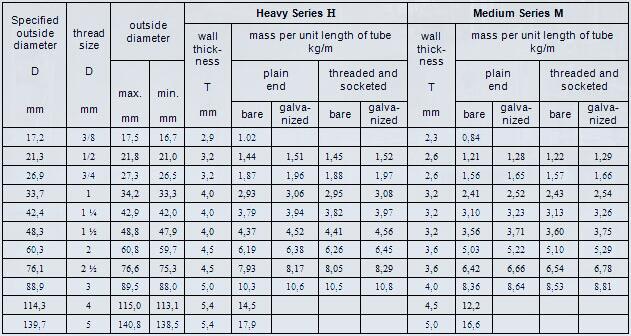

Production process
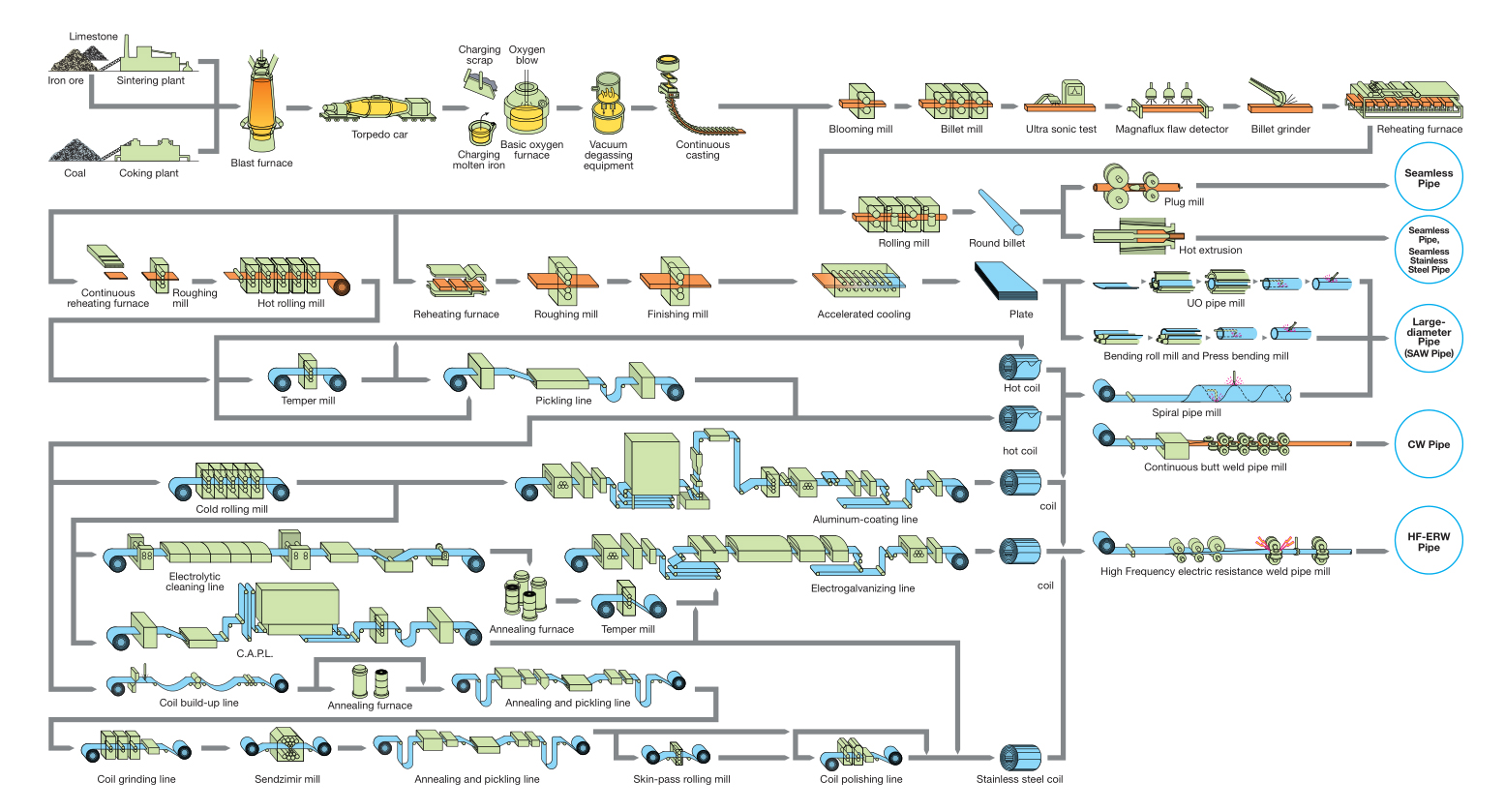
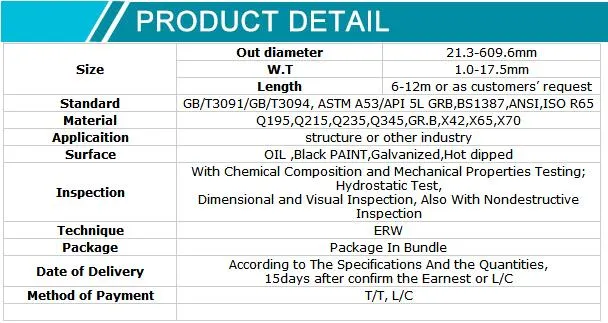
Hot-Dip Galvanization vs Electroplating
Hot-dip galvanization and electroplating (also known as electro-galvanizing) are both processes used to apply a protective zinc coating to steel or iron to prevent rusting. However, they differ in several important ways:
Process
-
-
- Hot-Dip Galvanization: In this process, steel or iron is immersed in a bath of molten zinc. The heat causes a metallurgical reaction that bonds the zinc to the steel or iron, creating a series of zinc-iron alloy layers topped with a layer of pure zinc.
- Electroplating: Electroplating involves using an electric current to reduce dissolved metal cations so they form a thin coherent metal coating on the steel or iron. The item to be plated is submerged in a solution containing zinc ions, and an electrical current is applied, causing the zinc ions to adhere to the surface.
-
Coating Thickness and Durability
-
-
- Hot-Dip Galvanization: This process typically results in a much thicker and more durable zinc coating than electroplating, which makes it more suitable for outdoor and harsh environments where greater corrosion resistance is needed. The zinc-iron alloy layers formed during hot-dip galvanization are hard and provide a high level of mechanical protection.
- Electroplating: The zinc coating from electroplating is typically thinner and not as durable as a hot-dip galvanized coating. However, it provides a smoother and more aesthetically pleasing finish, which makes it suitable for decorative items and indoor applications where high corrosion resistance is not required.
-
Costs and Applications
-
-
- Hot-Dip Galvanization: This process is generally more expensive due to the costs of maintaining a molten zinc bath and the energy needed to heat the material to be galvanized. It’s commonly used for industrial applications where long-term corrosion resistance is important, such as in the construction of buildings, bridges, and utility infrastructure.
- Electroplating: Electroplating is generally cheaper and is used for a variety of applications, including automotive parts, hardware, and other items where a decorative, shiny finish is desired.
-
In summary, while both processes are used for applying a protective zinc coating to prevent rusting, the choice between hot-dip galvanization and electroplating will depend on the specific requirements of the application, including the expected service environment, the desired appearance, and cost considerations.
What the Difference Bteween Hot Dip Galvanized Steel Pipe vs cold Dip Galvanized Steel Pipe
Galvanized steel pipes are coated with a layer of zinc to protect them from corrosion and extend their lifespan. The term “galvanizing” usually refers to the hot-dip method, but there’s another method known as cold galvanizing. Let’s examine the differences between the two:
Hot-Dip Galvanized Steel Pipe
Process: In the hot-dip galvanizing process, the steel pipe is cleaned to remove oil, grease, and mill scale, then it’s immersed in a bath of molten zinc. The high temperature of the zinc bath (around 460°C or 860°F) triggers a metallurgical reaction between the iron in the steel and the zinc, resulting in the formation of zinc-iron alloy layers that are bonded to the surface of the pipe.
Coating Thickness and Durability: The hot-dip galvanizing process forms a coating that is relatively thick and extremely durable. This coating is excellent for providing long-term protection against corrosion, especially in harsh environmental conditions.
Application: Hot-dip galvanizing is generally used for heavy-duty industrial applications where high corrosion resistance is required, such as in construction, infrastructure, and outdoor exposed structures.
Cold Galvanized Steel Pipe (Cold Galvanizing)
Process: Cold galvanizing, also known as “paint galvanizing,” involves painting the surface of the steel pipe with a zinc-rich paint. The zinc particles in the paint provide a degree of protection against corrosion, but the coating does not bond with the steel pipe in the same way as hot-dip galvanizing.
Coating Thickness and Durability: The coating formed by cold galvanizing is typically not as thick or durable as a hot-dip galvanized coating. It is more suitable for small, specific areas where hot-dip galvanizing is not practical.
Application: Cold galvanizing is typically used for minor repair work, for small parts that cannot be hot-dip galvanized, or for indoor applications where the conditions are not as harsh and the need for corrosion resistance is lower.
In summary, while both hot-dip and cold galvanizing can provide a degree of protection against corrosion, the hot-dip method generally provides a thicker, more durable, and longer-lasting coating. The choice between the two methods will depend on the specific requirements of the application.


